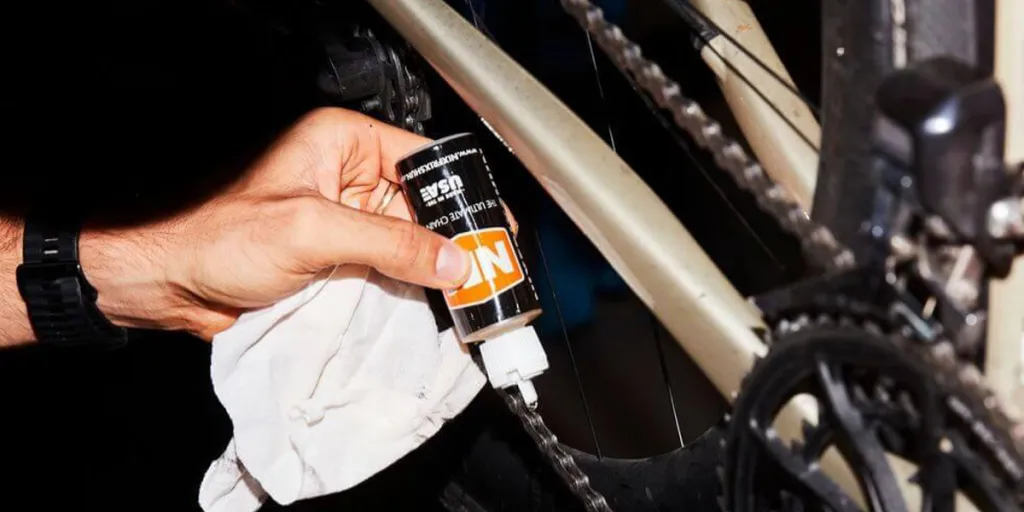In the ever-evolving world of aquatic exploration, the scuba mask stands as a pivotal tool, shaping experiences beneath the waves. As 2024 ushers in cutting-edge advancements, understanding the nuances of these essential underwater windows becomes crucial. A well-chosen mask not only ensures safety and comfort but also enhances the visual journey, allowing divers to immerse fully in the marine spectacle. This analysis delves into the intricate landscape of scuba masks, exploring types, market trends, and leading models, offering insights to guide those tasked with equipping enthusiasts and professionals alike. With the right knowledge, selecting a mask that meets the highest standards of quality and innovation is not just a choice, but a gateway to the depths of the ocean.
Table of Contents
1. Diverse designs and practical applications
2. 2024 market insights for scuba masks
3. Criteria for choosing quality scuba masks
4. Spotlight on leading scuba mask models
5. Conclusion
Diverse designs and practical applications
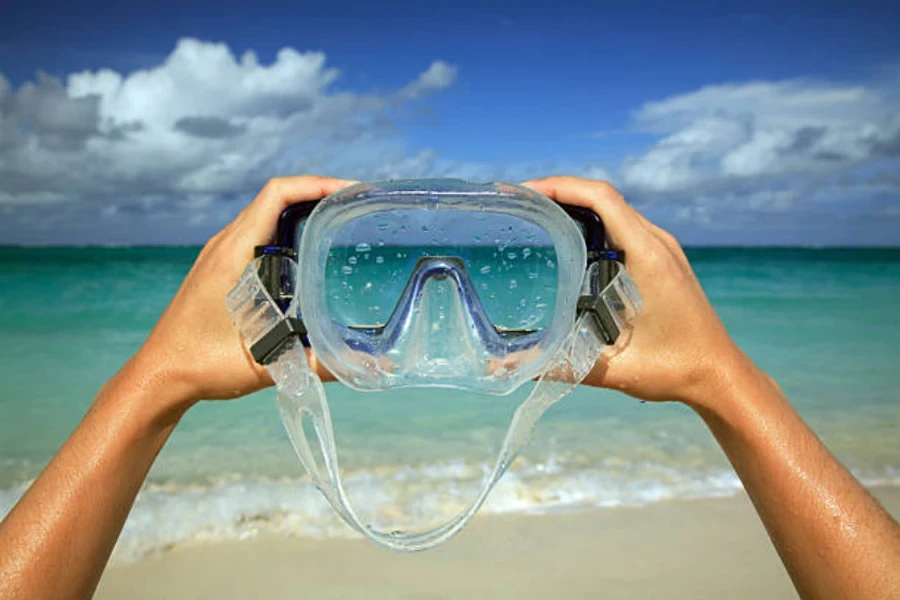
Exploring types of scuba masks
The realm of scuba masks is as varied as the marine environments they are used in, each type tailored to specific needs and preferences. Full-face masks, for instance, offer an integrated approach, combining the mask and breathing apparatus, which allows for natural breathing and a wider field of vision. These are particularly favored in professional settings for their communication capabilities and protection against cold water. Frameless masks, on the other hand, boast a sleek design with a single lens and minimalistic frame, providing a broader view and reduced weight, making them a popular choice among enthusiasts seeking a close-to-nature experience.
Low-volume masks, with their reduced air space and closer fit, offer ease of clearing and a more panoramic view, ideal for photographers and those keen to minimize drag. Each type, from the robust full-face to the streamlined low-volume, presents unique features such as UV protection, anti-fog technology, and color-enhancing lenses, as highlighted in the recent market offerings. These advancements not only improve the visual experience but also add layers of safety and comfort, crucial for any underwater venture.
Usage across different diving conditions
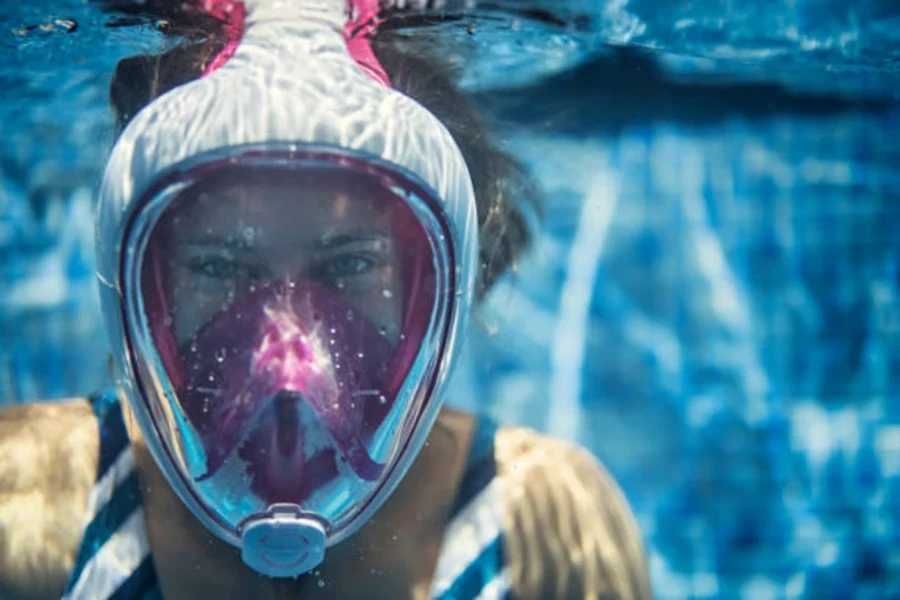
The performance of a scuba mask is significantly influenced by the conditions it’s used in. Full-face masks, for example, excel in colder waters and demanding professional scenarios, providing comprehensive protection and communication systems. Their ability to integrate with other diving gear makes them a staple in technical and deep-sea expeditions. Frameless and low-volume masks, with their compact design and wide field of vision, are well-suited for recreational diving and underwater photography. Their lightweight nature and ease of clearing make them a go-to for divers exploring calmer, tropical waters.
In challenging conditions, such as murky waters or night dives, masks with enhanced features like anti-fog technology and improved peripheral vision become indispensable. The choice of mask can significantly impact the safety and enjoyment of the dive, making it essential for those selecting gear to consider the specific needs of the dive and the diver. Whether it’s navigating the intricate coral reefs or embarking on a deep-sea exploration, the right mask can transform the experience, providing clarity, comfort, and confidence to the diver.
In the dynamic world of scuba diving, where technology and innovation continually redefine possibilities, understanding the diverse designs and practical applications of scuba masks is key. It’s not just about selecting a piece of equipment; it’s about choosing a companion that will enhance and secure the underwater journey, allowing divers to fully immerse themselves in the wonders of the aquatic world.
2024 market insights for scuba masks

Current trends shaping the scuba mask market
As 2024 unfolds, the scuba mask market is witnessing a surge in innovative trends and technological advancements. A significant shift is seen towards personalized and eco-friendly options, reflecting a growing awareness of environmental impact and individual diver needs. Technological enhancements such as augmented reality displays and improved anti-fogging systems are setting new standards for user experience. These masks not only promise a clearer view but also aim to provide vital information like depth, pressure, and navigation data directly in the diver’s line of sight.
Moreover, the integration of communication systems in full-face masks is becoming more sophisticated, facilitating seamless interaction between divers and surface teams. This trend is particularly noticeable in professional diving operations where coordination and safety are paramount. The market is also seeing a rise in masks designed for specific niches, such as low-volume masks for free divers and sturdy, pressure-resistant masks for deep-sea explorers. These specialized masks cater to the unique demands of different diving activities, ensuring optimal performance and safety.
Market data and predictions
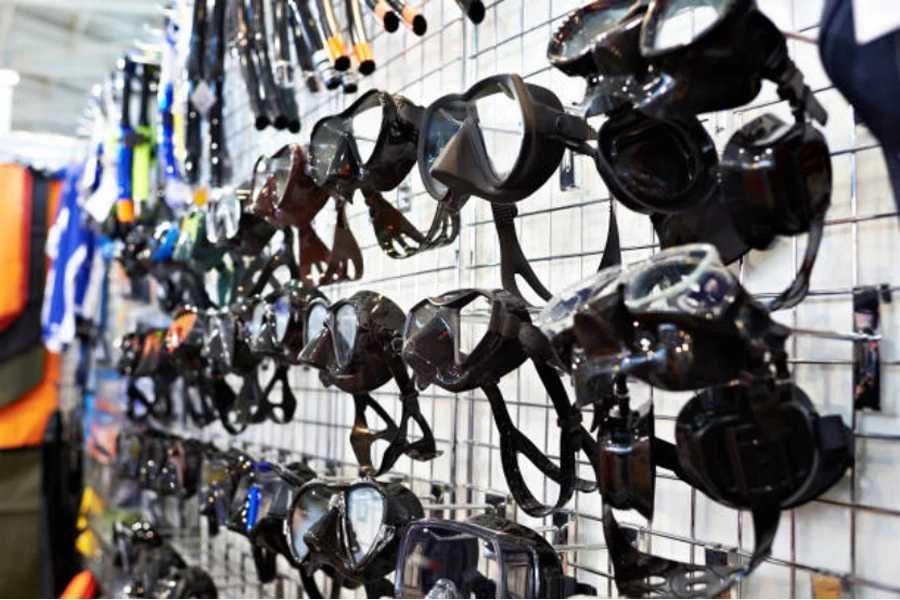
Recent market data indicates a robust growth trajectory for the scuba mask industry. The global Scuba Mask market, as of 2021, is valued at approximately $2.5 billion and is projected to grow to $4.3 billion by 2028. This growth is expected to occur at a Compound Annual Growth Rate (CAGR) of 6%. The driving factors behind this growth include an increasing number of water sport enthusiasts and a rising adoption rate of scuba masks across various applications such as for men, women, and kids. Projections for 2024 and beyond suggest a steady increase in demand, fueled by a rising interest in recreational diving and technological advancements in diving equipment. The market is expanding not just in traditional regions like North America and Europe but also in emerging markets in Asia and South America, where diving is becoming a popular leisure activity.
Consumer preferences are evolving, with a noticeable inclination towards masks that offer a blend of comfort, safety, and advanced features. This shift is driving manufacturers to invest in research and development, leading to a rapid pace of innovation in mask designs and features. The market is becoming increasingly competitive, with both established players and new entrants vying to capture the attention of discerning divers.
Predictions for the near future indicate a surge in eco-conscious products, with more divers opting for masks made from sustainable materials. Additionally, the customization trend is expected to grow, with more companies offering tailor-made masks to suit individual facial structures and preferences. As the market continues to evolve, these trends and data points provide valuable insights for those in the industry, helping them anticipate changes and adapt their strategies accordingly. The scuba mask market in 2024 is not just about the product; it’s about understanding the diver, the environment, and the technology that brings them together.
Criteria for choosing quality scuba masks
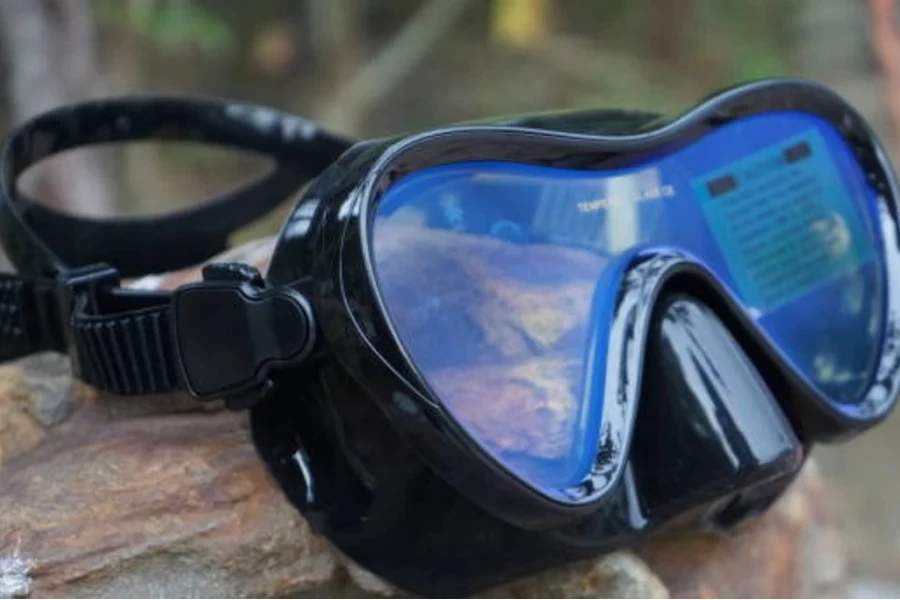
Assessing material and construction
In the intricate world of scuba diving, the choice of materials and construction of a mask can significantly impact a diver’s experience. Tempered glass, a material commonly used for the lenses, is a prime example of this. Unlike regular glass, tempered glass undergoes a thermal treatment that increases its strength and makes it up to four times stronger than its non-tempered counterparts. This process ensures that if the glass does break, it crumbles into small, granular chunks instead of jagged shards, significantly reducing the risk of injury. This characteristic is crucial for divers who explore varying depths and pressures, where the durability and safety of their mask are paramount.
Silicone, used for the mask skirt, is another material that plays a pivotal role in the comfort and functionality of scuba masks. Its hypoallergenic properties make it suitable for prolonged skin contact, reducing the risk of irritation during extended dives. The flexibility of silicone allows the skirt to conform to the diver’s face, creating a watertight seal that is both comfortable and effective. The quality of silicone can vary, with higher-grade silicone offering better resistance to deformation and discoloration over time. This resilience ensures that the mask maintains a proper seal and remains comfortable even after repeated exposure to saltwater and sunlight.
The construction of a scuba mask is just as critical as the materials used. The design of the frame, whether traditional or frameless, affects the overall durability and field of vision. Frameless masks, for instance, offer a wider field of view and are generally lighter, making them a popular choice among divers seeking a more immersive experience. However, the lack of a rigid frame means that they may not provide the same level of support and durability as traditional framed masks. The buckles and strap system are also vital components, with some designs offering quick-adjust mechanisms that allow divers to fine-tune the fit even while wearing thick gloves.
Regular maintenance is essential to preserve the integrity of these materials and the mask’s construction. Simple steps, such as rinsing the mask with fresh water after each dive and inspecting it for signs of wear, can significantly extend its lifespan. Divers are advised to check for fine cracks in the strap, irregularities in the silicone skirt, and any damage to the frame or buckles. Proper storage is equally important, with experts recommending that masks be stored in a cool, dry place away from direct sunlight to prevent premature aging of the materials.
In conclusion, the materials and construction of a scuba mask are fundamental to its performance, safety, and longevity. Tempered glass and high-grade silicone, combined with thoughtful design and regular care, can provide divers with a reliable and comfortable window to the underwater world. As technology advances and new materials emerge, the criteria for assessing scuba masks will continue to evolve, offering divers an ever-improving view of the depths they explore.
Fit and comfort considerations
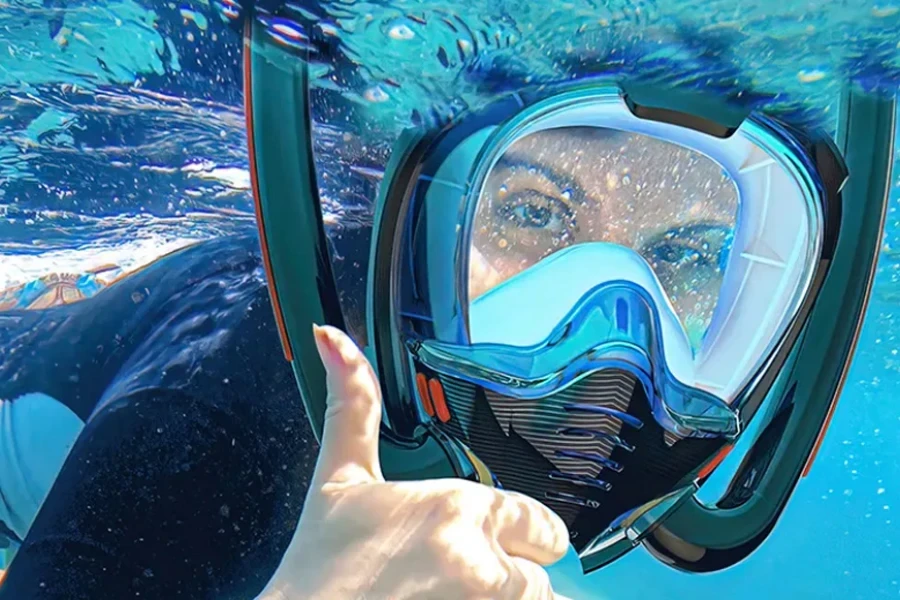
Selecting the right scuba mask is a nuanced process, with fit and comfort being paramount. The traditional ‘negative pressure test’—inhaling through the nose to see if the mask sticks—is widely regarded but flawed. It doesn’t accurately simulate real diving conditions where the mask is held in place by the strap and water pressure. Instead, a more effective method involves tilting the head back, placing the mask over the eyes and nose without inhaling, and checking for any gaps where the mask skirt doesn’t touch the face. This approach helps identify masks that naturally conform to the individual’s facial structure, ensuring a better initial fit.
The mask skirt, typically made of silicone, must create a watertight seal against the face. Its quality and flexibility are crucial for a comfortable fit. A well-designed skirt accommodates various facial movements and expressions without breaking the seal. However, every face is unique, and what works for one might not work for another. For instance, individuals with a pronounced bridge between the nose and forehead might find certain masks press uncomfortably against this area. Similarly, the nose pocket needs to be adequately sized and positioned to avoid discomfort under the nostrils.
The mask strap’s role is often underestimated. It should be snug but not overly tight, as over-tightening can deform the mask skirt and lead to leaks. The strap’s position is equally important; it should sit around the widest part of the cranium, usually just above the ears. An improperly positioned strap can cause the mask to ride down the face or push into the septum, both of which compromise comfort and the integrity of the seal. Divers are encouraged to make small adjustments to the strap’s tightness and position to find the most comfortable and effective fit.
Facial hair can also affect the mask’s fit. Beards and mustaches might disrupt the seal, leading to leaks. Some divers apply a small amount of petroleum jelly to the hairy areas to improve the seal, but the most reliable solution is to shave the area where the mask skirt sits.
Lastly, the choice between transparent and opaque skirts can influence comfort. Transparent skirts let in more light, creating an open and free sensation, which can be reassuring for new divers. However, they can also cause glare and reflections in sunny conditions, potentially obstructing the diver’s view. Opaque skirts, often black, reduce glare and provide a focused view but might feel more confining initially.
In conclusion, assessing the fit and comfort of a scuba mask involves more than a simple test. It requires understanding the nuances of facial structure, the quality and design of the mask skirt, the correct adjustment of the strap, and personal preferences regarding light and visibility. A carefully chosen mask enhances the diving experience, ensuring safety, comfort, and a clear view of the underwater world.
Advanced features and enhancements
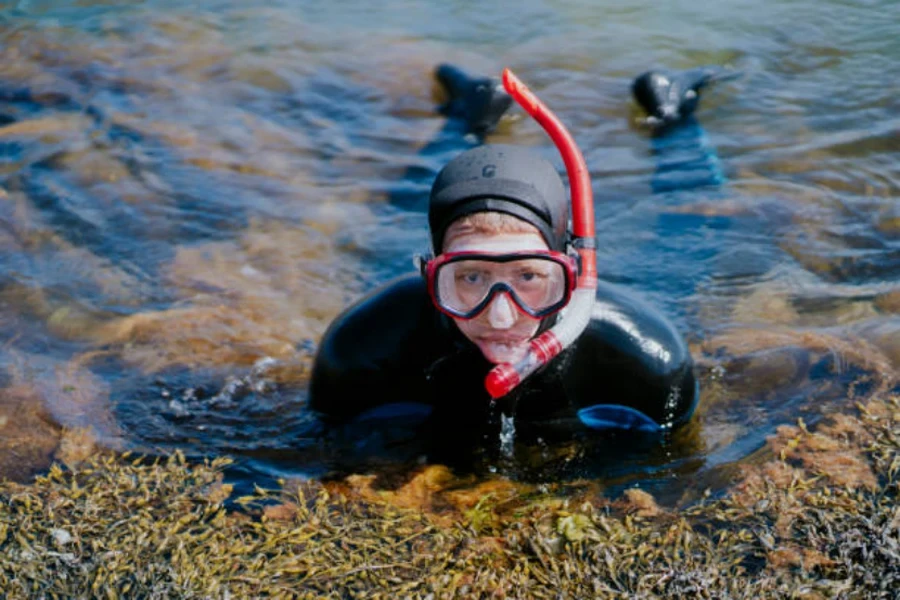
In the quest for the perfect underwater experience, advanced features in scuba masks play a pivotal role. UV protection, anti-fog technology, and color-enhancing lenses are not just additional perks but essential elements that can significantly enhance the diving experience.
UV protection is a critical feature, especially for divers exploring shallower depths where sunlight penetration is higher. Prolonged exposure to UV rays can be harmful to the eyes, and quality masks often come with lenses treated to block out harmful UV rays. For instance, some masks offer UV 420 Lens Treatment, which protects against high-energy visible (HEV) light that may damage the retina. This feature is particularly beneficial in clear, tropical waters where sunlight is intense and direct.
Anti-fog technology is another game-changer in the world of scuba diving. A foggy mask can obscure vision and ruin the diving experience. Traditional methods like using saliva or anti-fog sprays provide temporary solutions but can be inconvenient during a dive. Modern masks, such as the Tidal Mask by Tidal Sports, come equipped with advanced anti-fog technology. These masks have an internal lens treated with a hydrophilic coating that attracts water molecules, spreading them evenly across the surface to prevent fogging. Some masks even come with a replaceable anti-fog film that keeps the mask fog-free for months, depending on the frequency of use and care.
Color-enhancing lenses are a boon for underwater enthusiasts keen on experiencing the vibrant marine life in all its glory. Water absorbs colors like red and yellow, causing them to fade and making the underwater world appear duller. Color-correcting lenses use tinted filters to enhance these lost colors, improving contrast and making the underwater scenery more vivid and lifelike. Some divers prefer masks with tinted glass, which act like sunglasses at the surface, reducing glare and enhancing underwater colors. However, it’s essential to choose the right tint, as some might make it harder to discern colors and contrasts when photographing underwater.
When selecting a scuba mask with these advanced features, it’s crucial to consider the specific needs and preferences of the diver. UV protection is a must for shallow, sunny dives, while anti-fog technology is essential for those who struggle with constantly fogging masks. Color-enhancing lenses are ideal for divers keen on photography or those who want to experience the most vibrant underwater views. Each feature contributes to a safer, more comfortable, and visually stunning dive, making them key considerations in choosing the right scuba mask.
Spotlight on leading scuba mask models

Review of top models for 2024
As 2024 approaches, the scuba diving industry is witnessing an influx of innovative mask models, each boasting unique features and enhancements. Full-face masks, for instance, are gaining popularity for their comprehensive coverage and integrated systems. These masks cover the entire face, combining the traditional mask and regulator, and often include communication systems for enhanced underwater interaction. They are particularly favored in colder waters or environments with high levels of contaminants due to their superior protection and comfort. Models like the Ocean Reef Neptune III are pushing the boundaries with updates aimed at improving fit, functionality, and user experience.
Traditional masks are also seeing advancements, with manufacturers focusing on improving field of vision, comfort, and durability. Masks with wide-angle views, ergonomic designs, and advanced materials are becoming standard offerings. Features like UV protection, anti-fog technology, and color-enhancing lenses are now more refined, providing divers with clearer, more vibrant underwater experiences. The Tidal Mask by Tidal Sports, for example, is noted for its advanced anti-fog technology and replaceable anti-fog film, ensuring clear vision throughout the dive.
The scuba diving mask market in 2024 is showcasing a variety of innovative models, each with unique features catering to different diving needs. Here’s a closer look at some of the top models:

Ocean Reef Neptune Space G.Divers Full Face Mask: This model is a standout for its full-face design, integrating the mask and regulator for a seamless experience. It’s particularly favored in colder waters or environments with high levels of contaminants. The mask offers a wide field of vision and is compatible with underwater communication systems, making it ideal for professional divers.
Atomic Aquatics Venom Frameless Mask: Known for its superior clarity and comfort, the Venom Frameless Mask features a unique lens construction that enhances visibility underwater. Its frameless design offers a wide field of vision and a sleek, lightweight feel, making it a popular choice among recreational divers.
Hollis M1 Frameless Mask: The Hollis M1 is renowned for its crystal-clear vision, thanks to the Saint-Gobain Diamant Crystal Clear Lens. Its frameless design ensures a wide field of view, and the high-grade silicone skirt provides a comfortable and secure fit, suitable for a variety of face shapes.
Tusa M-2001 Paragon S: This model stands out for its UV lens treatment, offering protection against harmful UV rays. The mask also features a reinforced tri-mix frame, anti-reflective and anti-fog lens treatments, and a Freedom Fit II technology for superior comfort.
Cressi F1 Frameless Mask: The Cressi F1 is a budget-friendly option that doesn’t compromise on quality. It features a frameless design with a single lens for an unobstructed view and a soft silicone skirt for a comfortable fit. The mask is easy to clear and suitable for both beginners and experienced divers.
Each of these models brings something unique to the table, whether it’s the integrated communication capabilities of the Ocean Reef Neptune Space G.Divers, the enhanced visibility of the Atomic Aquatics Venom, the crystal-clear lens of the Hollis M1, the UV protection of the Tusa M-2001 Paragon S, or the affordability of the Cressi F1. Divers in 2024 have a range of high-quality options to choose from, catering to different preferences and diving conditions.
Comparative analysis of best models
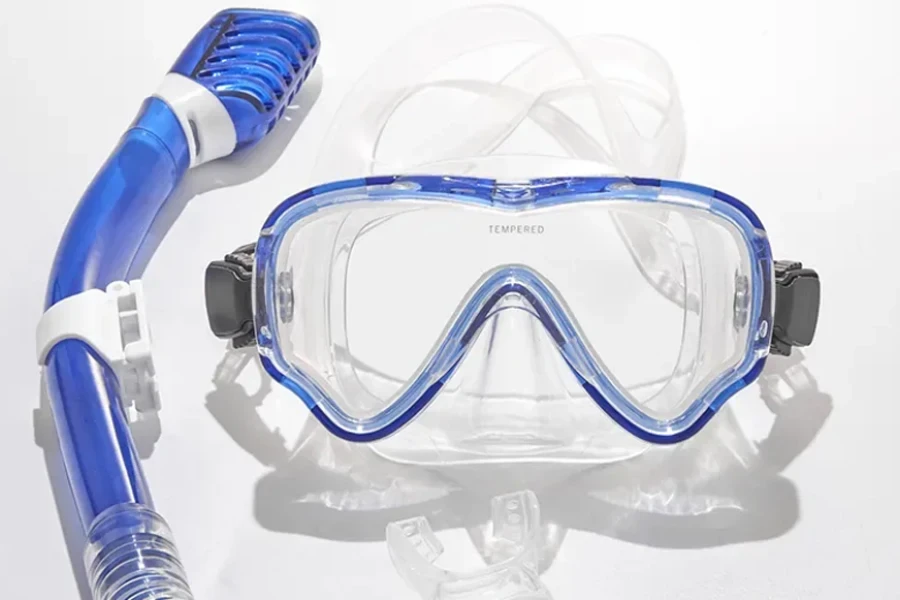
When comparing the top models, several factors come into play, including performance, user feedback, and suitability for various diving activities. Full-face masks offer a different experience compared to traditional masks, with advantages like better protection in cold or contaminated waters, more comfortable breathing, and the ability to communicate underwater. However, they are generally more expensive and might require additional training to use effectively. Traditional masks, while not as feature-rich, offer more flexibility and are often preferred for recreational diving and underwater photography due to their lighter weight and simpler design.
User feedback is crucial in understanding how these masks perform in real-world conditions. Divers often praise full-face masks for their comfort and the unique experience they provide, but some note the higher air consumption and the need for practice to handle them efficiently. Traditional masks receive accolades for their improved field of vision and comfort, with many divers appreciating the advancements in anti-fog and color-enhancing technologies.
In terms of suitability, the choice between full-face and traditional masks depends largely on the type of diving and personal preference. Full-face masks are ideal for divers looking for maximum comfort and protection, especially in challenging environments. They are also beneficial for professional or technical divers who require reliable communication underwater. Traditional masks, on the other hand, are suitable for a wide range of activities, from recreational diving to underwater photography, and are preferred by divers who value flexibility and simplicity.
Let’s delve into a detailed comparison of the Ocean Reef Neptune Space G.Divers, Atomic Aquatics Venom, Hollis M1, Tusa M-2001 Paragon S, and Cressi F1.
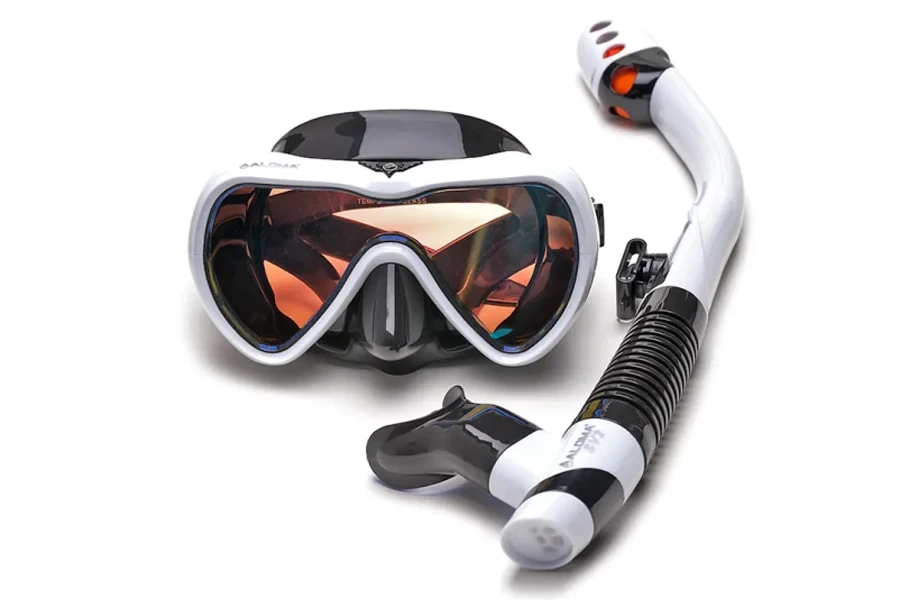
Performance in Cold and Contaminated Waters:
The Ocean Reef Neptune Space G.Divers excels in cold or contaminated waters, offering full-face coverage and integrated communication systems. Its design provides superior protection and comfort in challenging environments.
The other models, while not full-face, offer features like UV protection (Tusa M-2001 Paragon S) and anti-fog technology (Atomic Aquatics Venom), enhancing visibility and performance in various underwater conditions.
User Feedback on Comfort and Fit:
The Hollis M1 is praised for its comfortable fit and wide field of vision, making it a favorite among experienced divers. Its low-volume design and soft silicone skirt cater to a range of face shapes, including those with facial hair.
The Cressi F1, known for its affordability, also receives positive feedback for its comfortable fit and ease of clearing, suitable for both beginners and experienced divers.
Suitability for Recreational Diving and Underwater Photography:
The Atomic Aquatics Venom and Tusa M-2001 Paragon S are highly suitable for recreational diving and underwater photography. The Venom’s frameless design and UltraClear lens provide excellent visibility, while the Paragon S’s UV coating protects against harmful rays.
The Cressi F1’s frameless design and single lens offer an unobstructed view, making it a good choice for photographers.
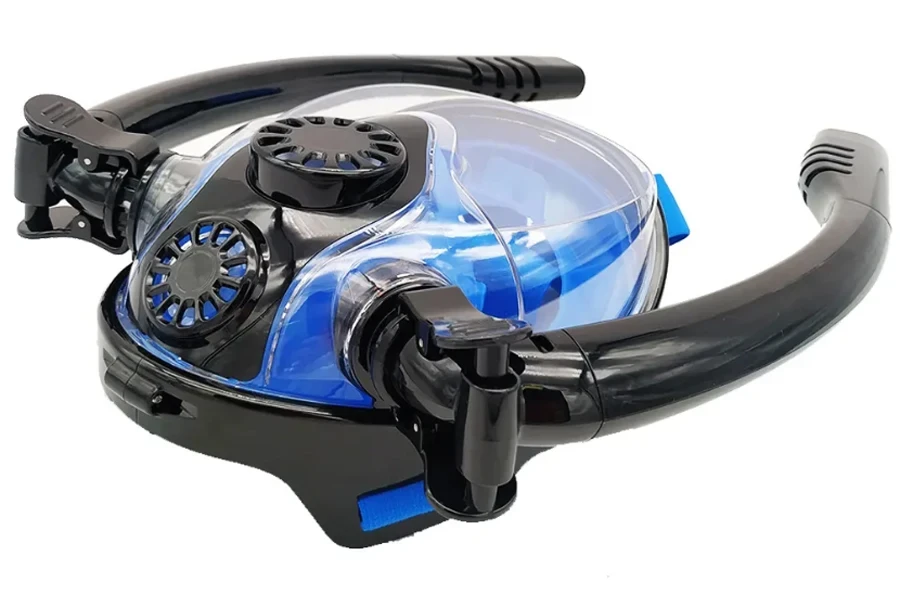
Advanced Features for Enhanced Diving Experience:
The Ocean Reef Neptune Space G.Divers stands out for its communication capabilities, ideal for professional or technical divers requiring reliable underwater communication.
The Atomic Aquatics Venom’s Schott Superwite UltraClear glass lens enhances visibility, and its low-volume design ensures no leakage, adding to the overall diving experience.
Overall Suitability Based on Diving Activities:
For divers seeking maximum comfort and protection in challenging environments, the Ocean Reef Neptune Space G.Divers is the top choice.
The Hollis M1 and Atomic Aquatics Venom are well-suited for experienced divers looking for high-quality visibility and comfort.
The Tusa M-2001 Paragon S and Cressi F1 are excellent choices for recreational divers and underwater photographers, offering a balance of features and affordability.
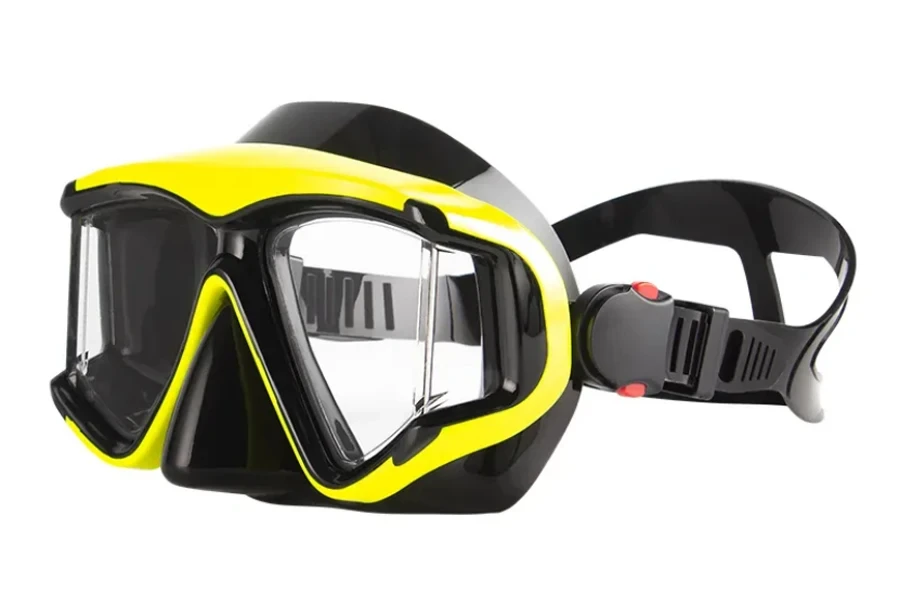
In summary, each of these models caters to different preferences and diving conditions. The Ocean Reef Neptune Space G.Divers is ideal for professional use in harsh environments, while the Atomic Aquatics Venom and Hollis M1 offer superior visibility and comfort for experienced divers. The Tusa M-2001 Paragon S provides additional UV protection, and the Cressi F1 is a budget-friendly option for a wide range of diving activities.
Conclusion
The selection of a scuba mask in 2024 is a critical decision, influenced by a blend of technological advancements, diver preferences, and environmental considerations. From the full-face Ocean Reef Neptune Space G.Divers to the sleek Atomic Aquatics Venom, each model offers unique features tailored to enhance the diving experience. As industry professionals, understanding these nuances and aligning them with specific diving needs ensures not only the safety and comfort of divers but also enriches their underwater journey, making informed selection paramount in the ever-evolving world of scuba diving.



